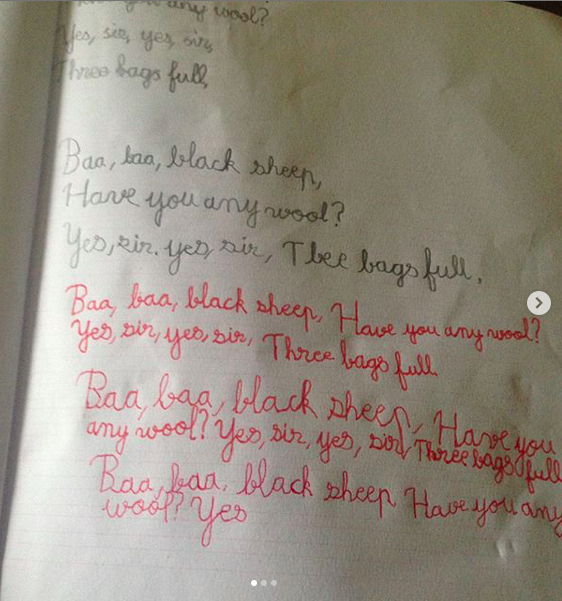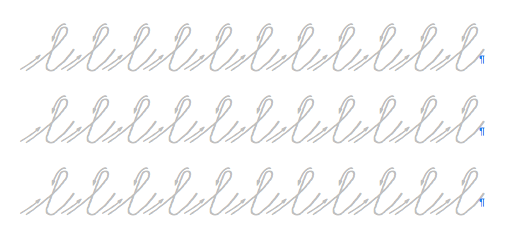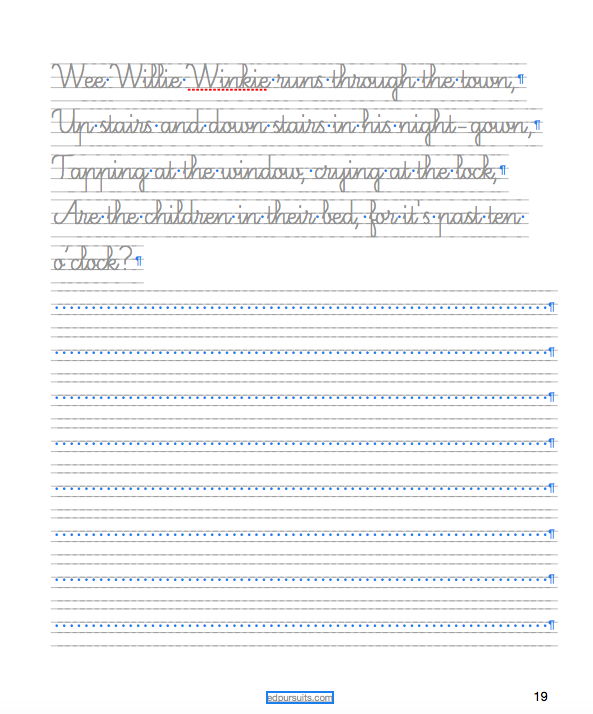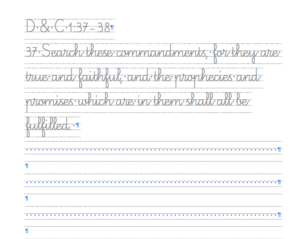Teach Cursive First
I like to teach cursive first when it comes to handwriting. Cursive letters are easier to distinguish from each other- p’s and q’s don’t look so similar, and b’s and d’s don’t look as similar. It is also pretty much impossible to write backwards in cursive. And it is easier to see that words are supposed to have spaces between them. So cursive is a great tool.

When a child is first learning to form the letters, it is imperative that someone sit with them as they write and make sure they form the letters correctly. This cursive font with arrows is great for this. Once they are good at forming the letters, it is a very easy thing for them to practice on their own. Handwriting is just a matter of practice!

Here is the workbook I made to help the kids learn how to write and form their first letters:
Copywork Explained
The beauty of copywork is that in copying, the children are not only practicing their handwriting, but they are also practicing spelling and punctuation, not to mention getting used to the type of language they are copying. And if you do the same one enough times, they may memorize it too.
Making Your Own Worksheets
I mostly make my own worksheets. But kids love having their own workbooks. So this year I have printed out a bunch of worksheets and stapled them into booklets. These are my favorite free fonts- school script dashed , cursif and some random fonts you might like– for making copywork worksheets.
I have mostly used scriptures for my kids to trace and then copy it on their own below the scripture, but you can also use poems, passages from books, nursery rhymes, etc.
Here’s a collection of nursery rhyme copywork passages for the beginning writer that can be stapled into a booklet:

I will print out enough for the week or more so that we always have copywork sheets ready. The nice thing with copy work too is that the kids can do it completely on their own once they know how to form the letters.
Once they are able to copy and write on their own, you can simply give them a passage in a book to look at and copy.
My kids’ handwriting has been nothing spectacular, some of the kids have had better handwriting than others. But since the younger kids went to French school, and my twins were there for the year they learn to read and write- their handwriting is awesome. So I am putting a little more focus on our handwriting – I don’t want the twins to lose that skill. I would also like the other kids to do better with their handwriting. We will be doing a lot more copywork this semester.
Use What is Available and Simple
I’ll also buy random handwriting workbooks that are cheap from Walmart or school supply stores, I’ve even found some at 5 Below. The more practice the better. The nice thing about handwriting too is that the kids can do it on their own once they know how to form the letters.
When they are older, of course, they get plenty of practice just writing in their journals and writing papers. But copywork may still be very useful especially if you have a kid who doesn’t naturally like to spell or enjoy the language arts.
Conclusion
Teaching handwriting does not need to be complicated. Basically, the kids need one on one attention to form the letters and then they need to keep practicing. When they are young and still learning, copywork is an excellent tool. You can easily make your own worksheets or find printables online or at the store. Have fun!!


